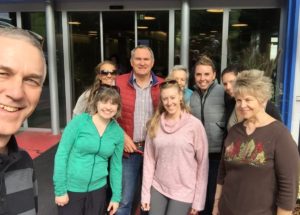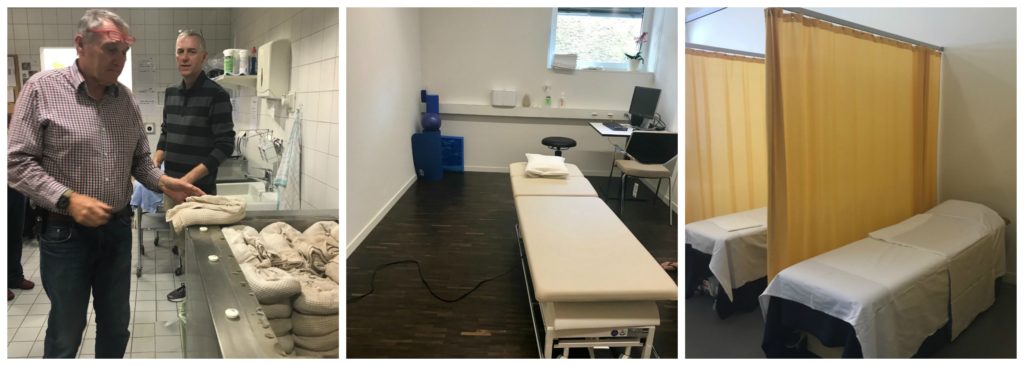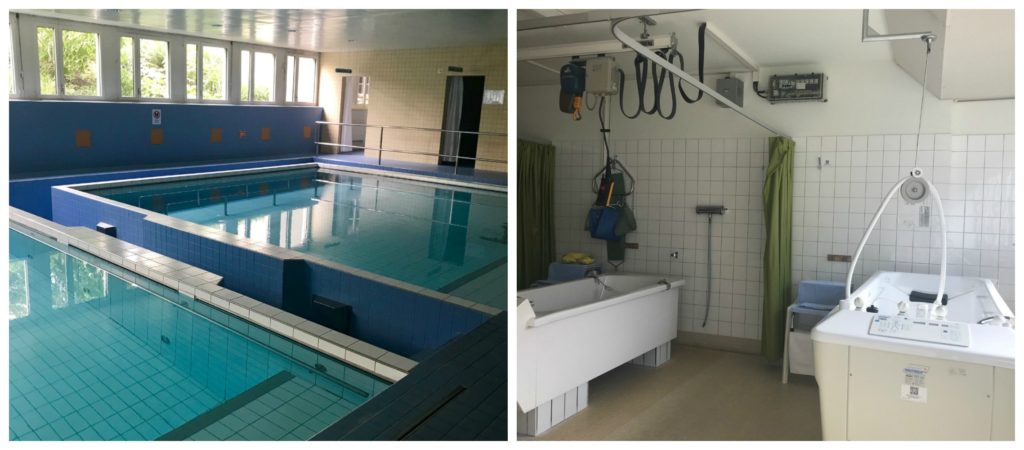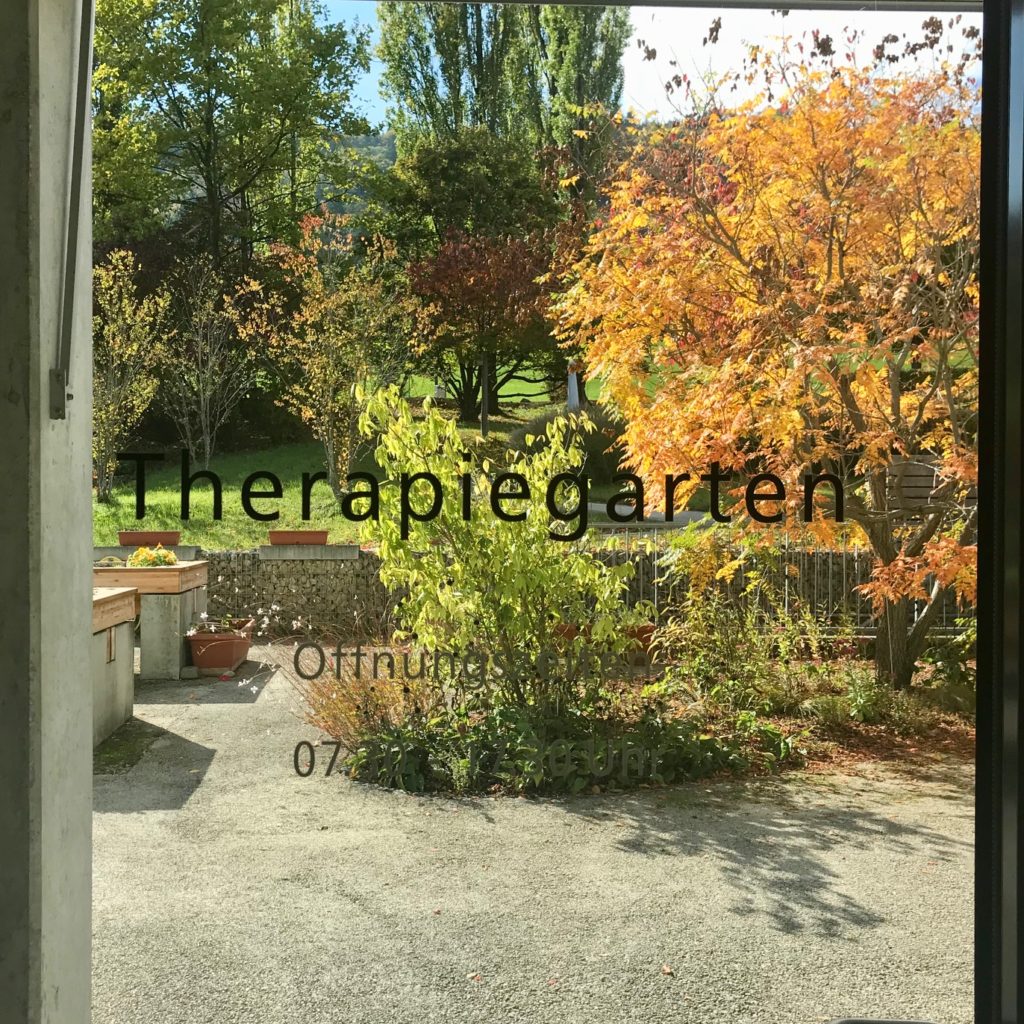Just tuning into my European Spa Tour series? Click here to start from the beginning and catch up!
Of all the stops on our tour, I’m most appreciative of the opportunities to tour two rehabilitation centers and learn how massage therapy is integrated into the fabric of healthcare in some European countries. For our first stop, we toured the Reha Clinic in Bad Zurzach, Switzerland with our guides Thomas and Julia. Julia trained as a massage therapist in Florida 25 years ago, but that training did not qualify her to practice massage when she returned to Switzerland. In Switzerland, she practices the Trager method. In the United States, many massage therapists know this as one kind of approach to massage or techniques they integrate into their traditional settings. Some of the East Village Spa therapists integrate similar techniques into sessions. In Switzerland, it is a more widely-recognized therapy and according to Julia, it is 80% covered by insurance. (Click here for a brief explanation of the Trager approach).

The rehabilitation clinic was in a complex with a large pool and sauna facility that was open to the public and used by patients. The clinic itself was for stays of 2 weeks to 4 months with some outpatient care. I would compare it to a place people would go in America after a joint replacement surgery or hip fracture when they needed intensive therapy but not long term care. The facility employs 13 licensed massage therapists (Plus physical therapists, doctors, and nurses) and additional technicians to do wraps for patients being treated for lymphedema.
I was most excited to learn how massage therapy is covered by the national insurance plans in Europe. As far as I understood, medical massage is covered in treatments like the Reha clinic, but the massages are quite different than what my clients and the typical massage therapy client would expect and if I’m being honest, they are probably not what the majority of our clients would want for their routine massage therapy, but these sessions would be immensely helpful in a rehabilitation setting.

Probably the coolest feature of the facility was their therapy garden. I initially assumed that this served as a place to practice physical and occupational therapy exercises or that the herbs grown were used in preparations, but I was absolutely delighted to learn that the primary purpose was chronic pain relief. According to our guide “Patients who are in pain forget the things that are not pain. They work in the garden to forget their pain and get new ideas.”
The following are the answers to my 3 most burning questions for our guides about what it is like to work as a massage therapist in a setting like their clinic.
Q: What kind of training is required for massage therapists in a facility like yours?
A: Typical is about 2 years of full-time (40 hours/week) study to become a licensed massage therapist. A relaxation or spa therapist can learn basic “feel-good” massage in about 2-3 weekends, but relaxation massage is not covered by insurance and isn’t licensed. Relaxation massages are out-of-pocket expenses. According to our tour guides, the licensed medical massage therapists respect the spa and relaxation massage therapists and see a need for their services as well.
Q: What type of services do the medical massage therapists offer and how do their services fit into the comprehensive medical treatment?
A: Medical massage therapists work as a treatment team with the physical therapists, doctors, and nurses to deliver rehabilitation treatments including aquatic therapy. They can offer hydrotherapy baths and exercises, and also perform treatments with tens units and lymphatic drainage machines. Therapists use saline (salt) wraps and hot packs. Our guide said “Massage therapists decide when a patient needs treatment like a tens unit. The massage therapist will call up the doctor and suggest it.”

Our guides said that the types of treatments are generally prescribed by standard guidelines depending on the condition they’re being referred for (i.e. how many hours of massage, aquatic therapy, exercise, physical therapy, etc…). For example, before a patient comes to the clinic to recover from a hip replacement, he gets a plan of care. The treatment team meets weekly for an hour to discuss about 30 patients in their care and their schedule of therapies. Massage sessions are typically 25 minutes long except for lymphatic drainage therapy for lymphedema which usually consists of a 30 minute morning session and a 60 minute evening session.
Q: What kind of ambiance (lighting and music) do you provide for massages?
A: (Confused looks from our guides). “Why would we play music?” We laughed. The massage rooms are stark and brightly lit, patients bring the sheets from their rooms with them to the massage therapy room unless they are paying extra out-of-pocket for special care. I love the idea of “why would they need extra sheets? They have sheets on their bed!”
Q: What is a typical workday like?
A: Perhaps a team meeting to discuss patient care, a full day of back-to-back prescribed sessions with about 2 minutes in between to do notes and clean your table and supplies, a short lunch break. A typical day for a massage therapist in their clinic is far busier and more fast-paced than for most American massage therapists I know, especially because the sessions are so short and they see so many patients.
My takeaway:
I LOVE that massage therapy training in Switzerland is so comprehensive! I have always wished that we had tiered licensing in the United States for therapists who wish to progress into a more medical/treatment oriented setting v. therapists who wish to provide relaxation and stress-relief massage only. I was glad to return to our clients and report that “Yes, massage IS covered by their national healthcare, but not the kind of massage therapy that you are accustomed to and only when prescribed for a particular ailment.” I suppose a benefit of not having massage covered under American insurance is that we can completely customize treatments for our clients and make sessions relaxing, therapeutic, and exactly what our clients want on a given day.
Overall, because of the amount of training for therapists in the medical settings and the very low requirement of training in the spa and relaxation settings, it is hard to accurately compare Swiss and American massage therapists or make accurate professional comparisons, but this tour was probably the highlight of my trip and I’m glad our hosts were able to take time out of their busy therapy schedules to visit with us!
Click here to keep reading! Part 5: Austrian “Kur,” Radon Pools, and Spa Massage


